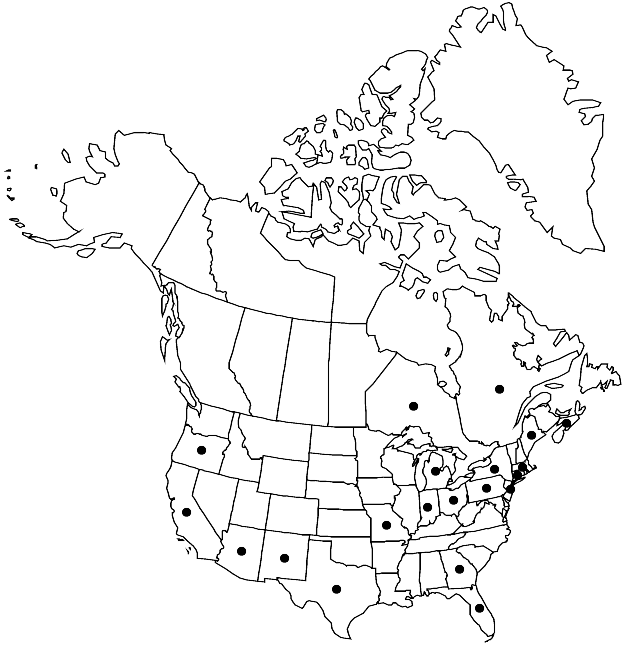Difference between revisions of "Diplotaxis tenuifolia"
Syst. Nat. 2: 632. 1821.
FNA>Volume Importer |
imported>Volume Importer |
||
| Line 8: | Line 8: | ||
}} | }} | ||
|common_names=Perennial or slimleaf wall-rocket;flixweed | |common_names=Perennial or slimleaf wall-rocket;flixweed | ||
| + | |special_status={{Treatment/ID/Special_status | ||
| + | |code=W | ||
| + | |label=Weedy | ||
| + | }}{{Treatment/ID/Special_status | ||
| + | |code=I | ||
| + | |label=Introduced | ||
| + | }} | ||
|basionyms={{Treatment/ID/Basionym | |basionyms={{Treatment/ID/Basionym | ||
|name=Sisymbrium tenuifolium | |name=Sisymbrium tenuifolium | ||
| Line 30: | Line 37: | ||
|elevation=0-2100 m | |elevation=0-2100 m | ||
|distribution=N.S.;Ont.;Que.;Ariz.;Calif.;Conn.;Fla.;Ga.;Ind.;Maine;Mass.;Mich.;Mo.;N.J.;N.Mex.;N.Y.;Ohio;Oreg.;Pa.;Tex.;Eurasia;Africa;introduced also in South America (Argentina);Australia. | |distribution=N.S.;Ont.;Que.;Ariz.;Calif.;Conn.;Fla.;Ga.;Ind.;Maine;Mass.;Mich.;Mo.;N.J.;N.Mex.;N.Y.;Ohio;Oreg.;Pa.;Tex.;Eurasia;Africa;introduced also in South America (Argentina);Australia. | ||
| + | |introduced=true | ||
|discussion=<p><i>Diplotaxis tenuifolia</i> was introduced from Europe as a ballast plant in the last century. It may have failed to persist in some of the recorded provinces and states.</p> | |discussion=<p><i>Diplotaxis tenuifolia</i> was introduced from Europe as a ballast plant in the last century. It may have failed to persist in some of the recorded provinces and states.</p> | ||
|tables= | |tables= | ||
| Line 53: | Line 61: | ||
|publication title=Syst. Nat. | |publication title=Syst. Nat. | ||
|publication year=1821 | |publication year=1821 | ||
| − | |special status= | + | |special status=Weedy;Introduced |
| − | |source xml=https:// | + | |source xml=https://bibilujan@bitbucket.org/aafc-mbb/fna-data-curation.git/src/bb6b7e3a7de7d3b7888a1ad48c7fd8f5c722d8d6/coarse_grained_fna_xml/V7/V7_649.xml |
|tribe=Brassicaceae tribe Brassiceae | |tribe=Brassicaceae tribe Brassiceae | ||
|genus=Diplotaxis | |genus=Diplotaxis | ||
Revision as of 23:59, 27 May 2020
Perennials, (usually suffrutescent, roots with shoots from adventitious buds), strongly scented (with glucosinolates), (glaucescent). Stems erect, 2–7(–10) dm, glabrescent or sparsely pubescent basally. Basal leaves: blade elliptic to obovate, 2–15 cm × 10–60(–80) mm, margins sinuate to deeply pinnatifid, (2–5 lobes each side). Cauline leaves petiolate; similar to basal, (distal cauline shortly petiolate, blade similar, with narrower segments), surfaces usually glabrescent. Fruiting pedicels 8–35 mm. Flowers: sepals 4–6 mm, glabrous or pubescent, trichomes straight; petals yellow, 7–11(–13) × 5–8 mm, (apex rounded); filaments 4–8 mm; anthers 2.5–3 mm; gynophore 0.5–3 mm. Fruits usually erect, rarely ascending, (somewhat torulose, slightly compressed), 2–5 cm × 1.5–2.5 mm; terminal segment (stout), beaklike, 1.5–3 mm, seedless; (ovules 20–32(–46) per ovary). Seeds 1–1.3 × 0.6–0.9 mm. 2n = 22.
Phenology: Flowering spring–fall.
Habitat: Waste places, disturbed areas, wharf and railroad ballast, sandy beaches, muddy shores, wet woods, mountain slopes
Elevation: 0-2100 m
Distribution

Introduced; N.S., Ont., Que., Ariz., Calif., Conn., Fla., Ga., Ind., Maine, Mass., Mich., Mo., N.J., N.Mex., N.Y., Ohio, Oreg., Pa., Tex., Eurasia, Africa, introduced also in South America (Argentina), Australia.
Discussion
Diplotaxis tenuifolia was introduced from Europe as a ballast plant in the last century. It may have failed to persist in some of the recorded provinces and states.
Selected References
None.